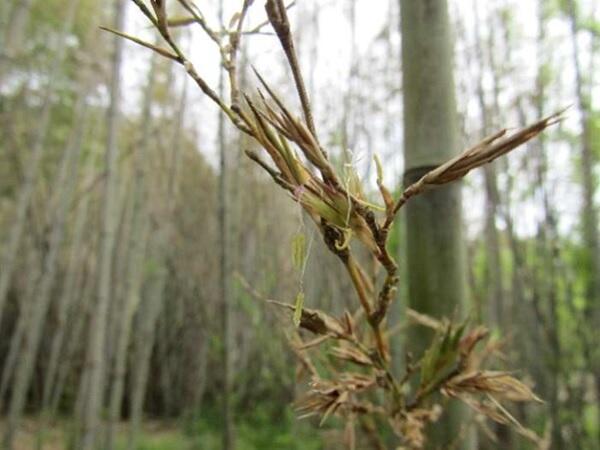Generally, bamboo plants do not flower frequently, but when they do, the timing of flowering is synchronized over a wide area. The flowering cycle varies depending on the bamboo type, with cycles of 48, 60, and 120 years or other periods reported. Furthermore, it has been speculated that bamboo plants may die after flowering. The bamboo plant Hachiku (Phyllostachys nigra), which is believed to have originated in China and was introduced to Japan during the Nara period (710−794 CE), is speculated to have a 120-year flowering cycle. However, because of the excessively long interval between flowering events, the exact status of the plant following flowering is not yet fully understood.
The research team led by Professor Toshihiro Yamada of the Graduate School of Integrated Sciences for Life and the Department of Integrated Global Studies (IGS) at Hiroshima University conducted a field survey for three years following the flowering of the Hachiku bamboos in Higashi-Hiroshima City in 2020. For the first time, the team confirmed that Hachiku plants do not produce seeds after flowering or grow shoots (young sprouts from underground stems), and the entire bamboo forest eventually dies. This study was published in PLOS ONE.

Provided by Toshihiro Yamada
During the three years (2020−2022) after the team's confirmation of the Hachiku flowering, 80% of the culms in the study bloomed, and those that had bloomed died soon after flowering. The remaining 20% of culms also all died by the summer of 2022. In other words, the research team confirmed that all the culms died within three years after flowering, regardless of whether the flowers bloomed or not.
Furthermore, even though the flowers bloomed, no seeds were produced at all. The production of bamboo shoots also ceased after flowering. The team also observed the appearance of many small bamboos that were not present before flowering, but these were also short-lived. This means that there were no signs of bamboo forest regeneration during the three years after flowering.
At first glance, the first flowering in 120 years may even seem like a one-way ticket to self-destruction. If the Hachiku plants were to truly become extinct after flowering, it would contradict the fact that this bamboo species has continued to survive in Japan. In the three-year study, the phenomenon of Hachiku flowering may seem irrational, but there may be reasonable explanations for it when observed over a much longer timeframe.
Journal Information
Publication: PLOS ONE
Title: Does monocarpic Phyllostachys nigra var. henonis regenerate after flowering in Japan? Insights from 3 years of observation after flowering
DOI: 10.1371/journal.pone.0287114
This article has been translated by JST with permission from The Science News Ltd. (https://sci-news.co.jp/). Unauthorized reproduction of the article and photographs is prohibited.




